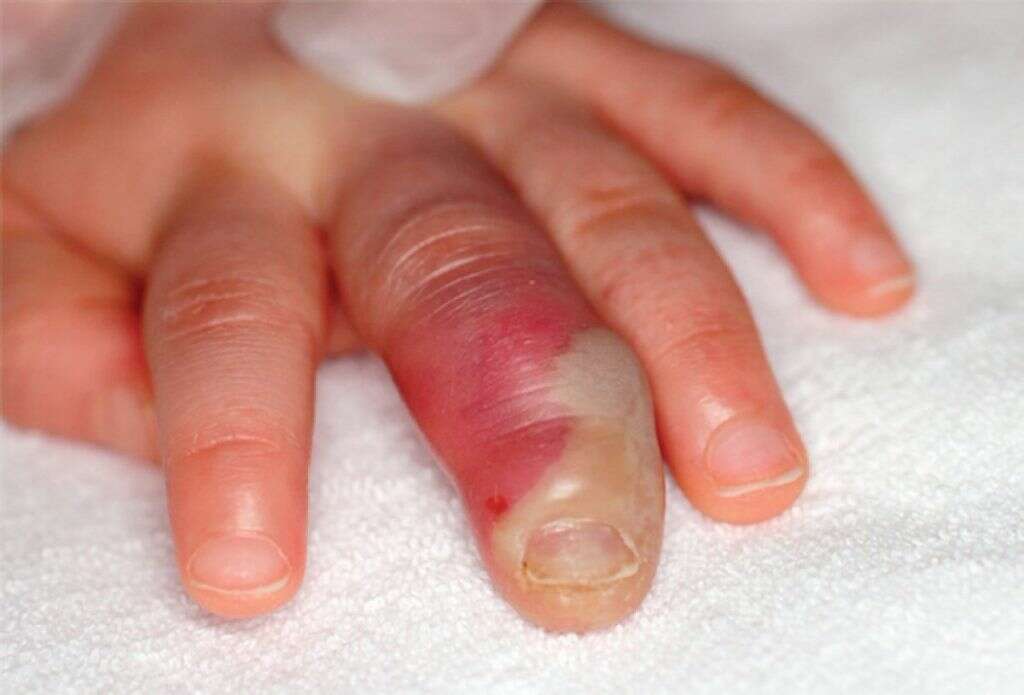What Is Herpetic Whitlow?
We are always using our fingers to pick things up, and they are always coming into touch with different surfaces. This makes it inevitable that we will pick up the occasional scratch or cut, and they are even prone to the occasional insect bite. These can all result in some discomfort, but they will not usually be too serious.
The different surfaces that our fingers touch are also likely to be coated with pathogens, thus making them prone to developing infections. This is especially the case if the skin of our fingers is broken in some way. There are numerous infections we can pick up on our fingers, one of which is herpetic whitlow.

1. Herpetic Whitlow?
Herpetic whitlow is a type of viral infection. In most cases, it will only be the fingers that are affected, and it can result in blisters and sores developing in the infected area. The condition causes a wound, which is known as a whitlow, to appear on the fingers. It can appear in people of all ages and also in people from all walks of life.
As the name suggests, the infection is caused by the herpes virus, particularly those that cause oral herpes (HSV-1), and genital herpes (HSV-2). The virus is common and highly contagious, and there are a number of ways that people can contract herpetic whitlow.

2. Transmission
As mentioned, the herpes virus is a very contagious pathogen. All it takes to contract herpetic whitlow is for the skin to come into contact with the virus. This can be by way of contact with an infected person, or by contact with infected surfaces. It is not necessary for patients to have a history of herpes in order to develop herpetic whitlow.
Herpetic whitlow is often, however, a secondary infection from other herpes infections. Herpes typically causes sores around the mouth or on the genitals and touching these sores can cause the infection to spread to the finger. If the patient’s finger has even a small cut then the virus will be able to enter the body.

3. Symptoms
Most people will develop symptoms of herpetic whitlow up to two weeks after being initially infected with the virus. The main symptom is blistering on the fingers. In some cases, the patient will have a cluster of blisters on the infected finger. In other cases, the patient might have only one blister.
Eventually the blisters will burst, releasing very contagious fluids and infected people should take care to help prevent other people from being infected. The blisters will then scab over and it can take around 3 weeks for them to heal completely. In addition to the blisters, herpetic whitlow will also likely have some other symptoms.

4. Pain
The blisters that are associated with herpetic whitlow can be very painful to the touch. The area surrounding the area can also be very painful, and patients will sometimes complain of a tingling or burning sensation. Pain in the fingers will also sometimes appear before the blisters do.
The infected area can also swell up and become very red. The patient may also have red marks around the infected area, or leading away from it. The pain will eventually subside as the infection fades away. The pain can develop in any of the fingers along with the blisters in fingers that have been infected.

5. Swollen Lymph Nodes
Our lymph nodes play a very important part in helping to keep us safe from pathogens. They help to keep the blood clear of unwelcome visitors that might be harmful to us. They are located in numerous locations in the body, most notably under the armpits, and in the neck and groin.
As one of the key components of the immune system, our lymph nodes will be hard at work if an infection is present. This can cause them to become swollen, and this is a potential symptom of herpetic whitlow. They may also be a little sore at times, but they are nothing to be concerned about.

6. Fever
Pathogens will struggle to survive if their environment is too hot or too cold. If the temperature is not within certain ranges then they will not be able to multiply as easily, and they may even expire outright. Our immune systems have evolved to be able to take advantage of this phenomenon.
A fever occurs when the immune system makes the body hotter than usual to try and tackle unwelcome intruders. It achieves this by adjusting the body’s internal thermostat, making us feel cold, which is why fevers come with chills. Feeling cold causes us to shiver, and the shivering action of our muscles helps to heat the body up.

7. Recurring Infections
Once the herpes virus has been contracted, it will remain with us for the rest of our lives. There is no known cure but, thankfully, it will be dormant for the vast majority of the time. It will occasionally become active again and, when this happens, the symptoms will likely return.
Even though the patient can remain infected, and oral and genital herpes symptoms will return from time to time, recurrences are much rarer in herpetic whitlow. In the rare cases that the symptoms do return, the patient’s symptoms will likely be milder than the previous time. The symptoms will also likely heal faster than previously.

8. Complications
While herpetic whitlow can be uncomfortable, it is usually only a very mild condition and the symptoms will usually pass with no permanent damage done. Regardless, there is the potential for complications that can make the condition even more uncomfortable for the patient.
Blisters have the potential to become infected. Such infections can become quite nasty if they are not treated. There is also a chance that the virus can infect other body parts, including the eyes. If the herpes virus does infect the eyes then it can cause permanent damage in a small number of cases. It might even lead to permanent visions loss in the most extreme cases.

9. Diagnosis
Many people with herpetic whitlow will not bother seeing their doctor. They might already know what it is and know it is not serious. At other times they might pass it off as something else that is not concerning. If the blisters become infected, however, then you should speak with your doctor to have it treated.
If you do visit a doctor, then they will often be able to diagnose the condition simply by looking at the infected finger. This is usually all that is necessary but your doctor might wish to confirm the diagnosis. This can be achieved with the help of a blood test or a swab that is then sent to a laboratory for analysis.

10. Treatment
As mentioned already, there is no known cure for the herpes virus and it will remain with the patient even after symptoms have disappeared. Treatment for the condition is not usually deemed necessary because it is expected to pass in a few weeks or so. You may need antibiotics if the blisters become infected, however.
Prescription drugs are available that will help herpetic whitlow pass quicker, but these will need to be used within a day of symptoms arising. These drugs can also help prevent the infection from spreading to elsewhere. Painkillers and other remedies can be used to help to ease the symptoms of the condition.












